One of my favorite activities during the winter is to get outdoors and track animals in the snow. We have quite a substantial amount of open and wooded property here in Maine, with a pond, brook, and stream. The area is also rich with a diverse amount of wildlife, so you never know what types of wildlife, or evidence thereof, you may come across while out in the field.
The following photographs are of a variety of animal tracks, scat, and other evidence of wildlife presence here on the property. I have gathered these photographs throughout the month of January. We have experienced a good amount of snowfall and freezing rain with the frigid cold this month, as well as warmer days. While some of the photographs show fresh tracks, others are distorted from freezing and thawing.
Currently, there is a pretty good amount of snow on the ground, with more expected to fall this week. I usually fare pretty well getting around in the cold weather and snow while out looking for animal tracks. I usually tolerate the cold without issue. I wear several layers of clothing and a fleece ear warmer headband. My hands and feet are another story. There is nothing more annoying when you are out in the field taking photographs than when your feet and hands are cold. I have solved my cold feet problem by wearing Baffin women’s ice field insulated boots. These boots have been a real lifesaver for keeping my feet warm and dry. As of now, the snow is coming up to my knees and in some areas on the property, up to my thighs. These Baffin boots are very efficient at keeping the snow out, with a web-lacing system and drawstring collar at the top. There is also a Thermaplush inner boot system that keeps warmth in. They are so warm in fact, that I sometimes don’t wear socks and my feet feel quite toasty while outdoors. These boots also claim the wearer of these boots will experience a comfort level, even when the thermometer reaches -148 degrees Fahrenheit. Well, I don’t think I will ever be testing that claim, but I am quite pleased with these boots in our winter temperatures. I am still working on my cold hands though. There are days that I can get by with my current pairs of gloves, but I am on the hunt for a good pair of winter photography gloves. Does anyone have any suggestions?
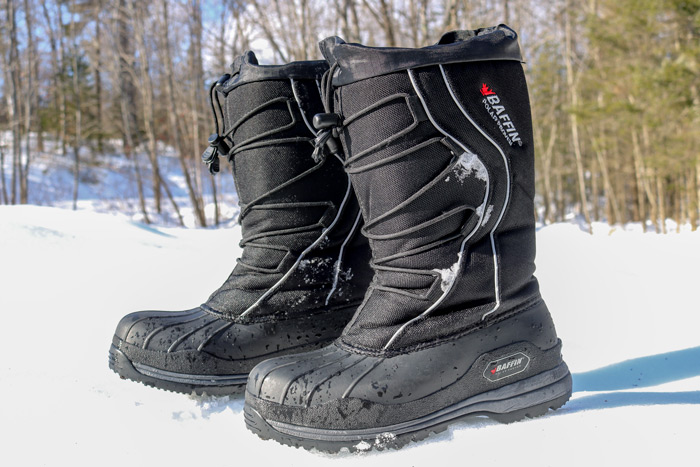
My pair of Baffin women’s ice field insulated boots.
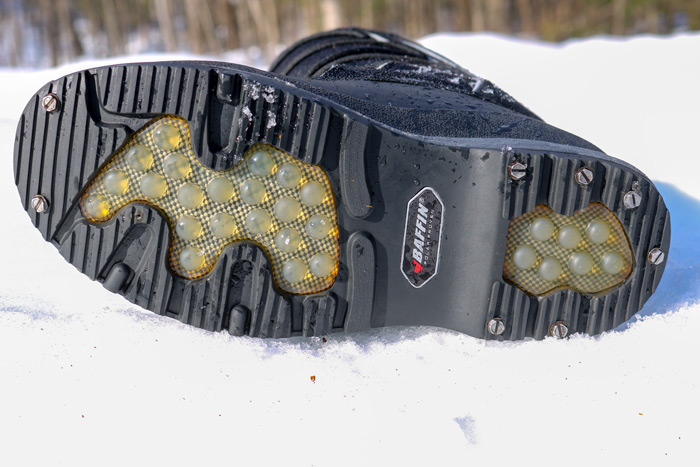
I added studs to the bottoms for extra traction. There are a few missing from this season and I will have to replace these soon.
Now for the animal tracking. The first tracks I found were American red squirrel Tamiasciurus hudsonicus tracks. This wasn’t too difficult, because I have had up to eight of these critters visiting my bird feeders. To no surprise, I found their tracks in the woods close to the house.
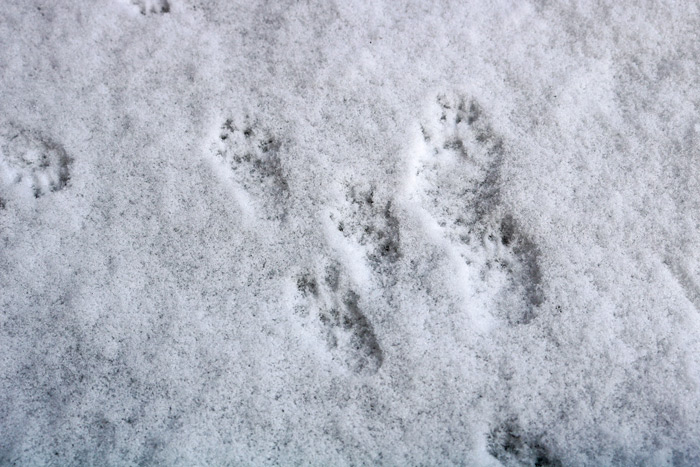
Finding fresh American red squirrel tracks in the snow.
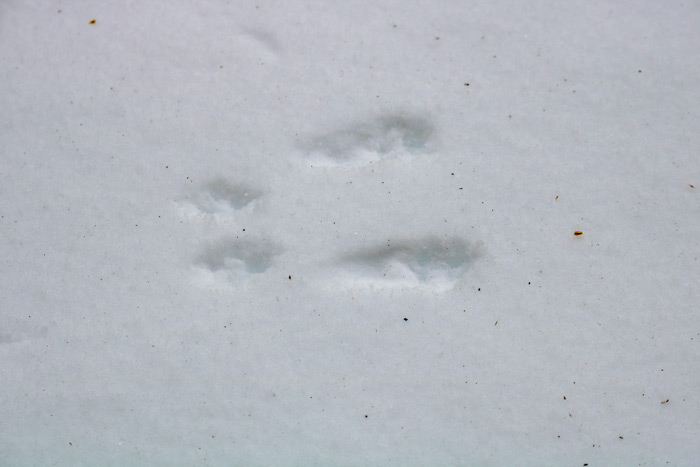
American red squirrel tracks in the snow.
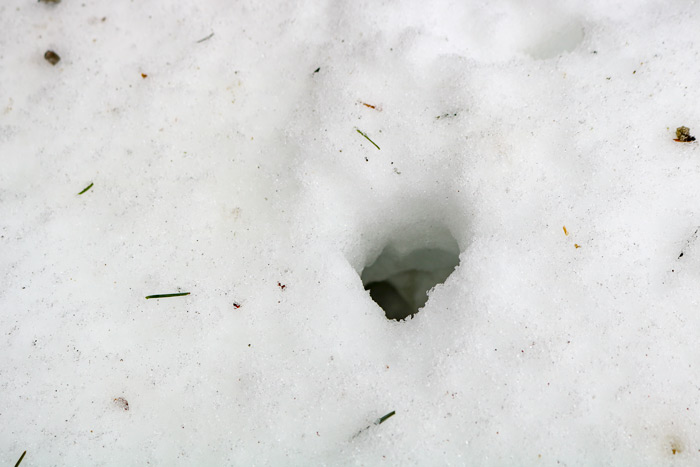
An American red squirrel tunnel in the snow. These squirrels have created a whole network of tunnels around the property. With every fresh snowfall, they make more. This is very smart on their part. They can get around quickly and are also well-protected from predators.
There is a nice mixture of deciduous, pines, and conifers as well as plenty of water sources located on the property. It should come as no surprise that I would find an abundance of evidence of white-tailed deer.
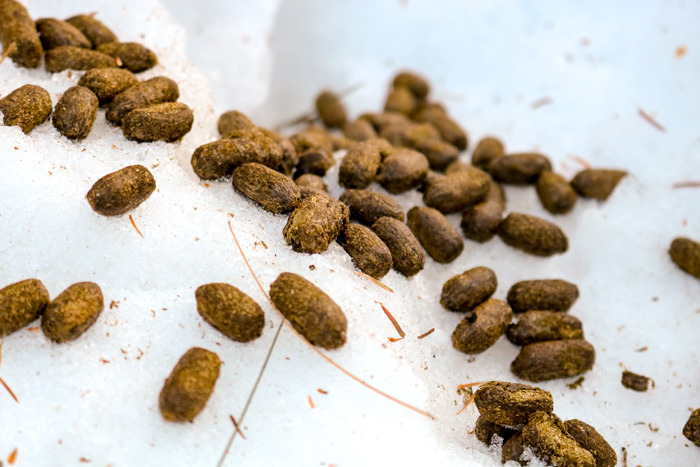
White-tailed deer Odocoileus virginianus scat in the snow.
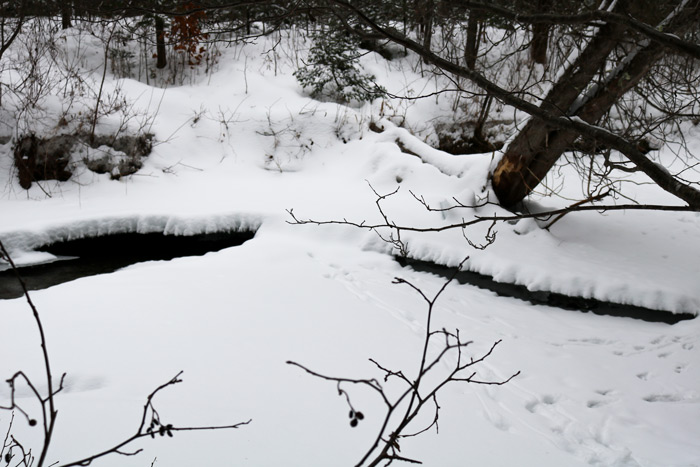
White-tailed deer tracks crossing the ice on the brook.
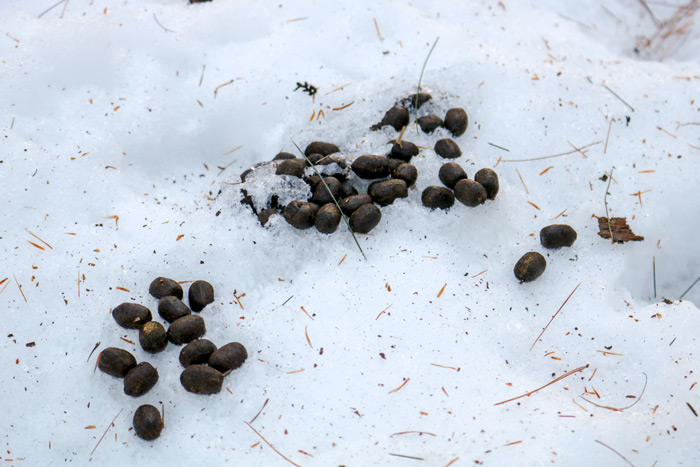
More white-tailed deer scat in the snow.

I believe these may have been the tracks of a white-footed mouse Peromyscus leucopus.
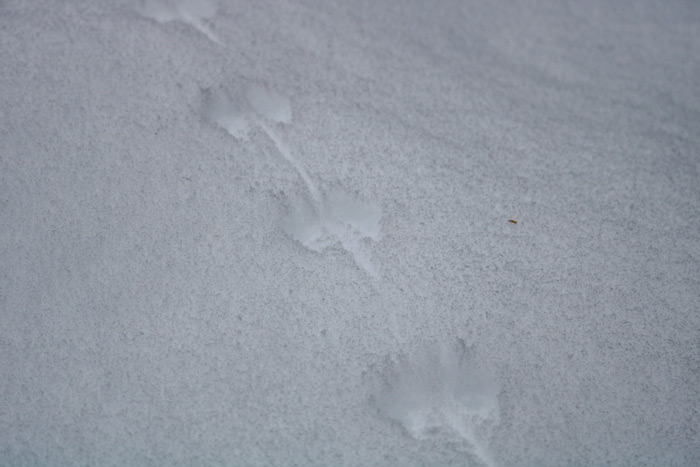
Here you can see the rodent’s foot tracks as well as where the tail left a trail in the snow.
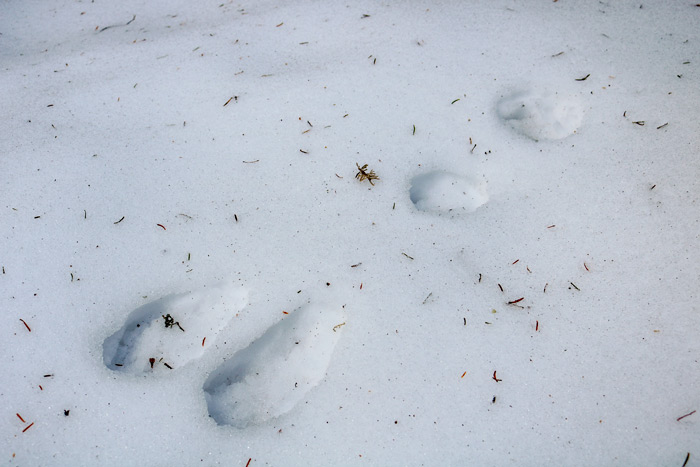
This has been one of my favorite animals to track. For some reason, I haven’t seen any snowshoe hare Lepus americanus tracks since my first winter here. I actually got to see a lot of this snowshoe hare over the summer and I was hoping it would stick around for the winter. Now all I have to do is find the hare in the snow. By this time the coat of the hare will be changing to white in order for it to be camouflaged in the snow. I also believe I may have been tracking three different hares. A few of the tracks were fresh and very different in size.
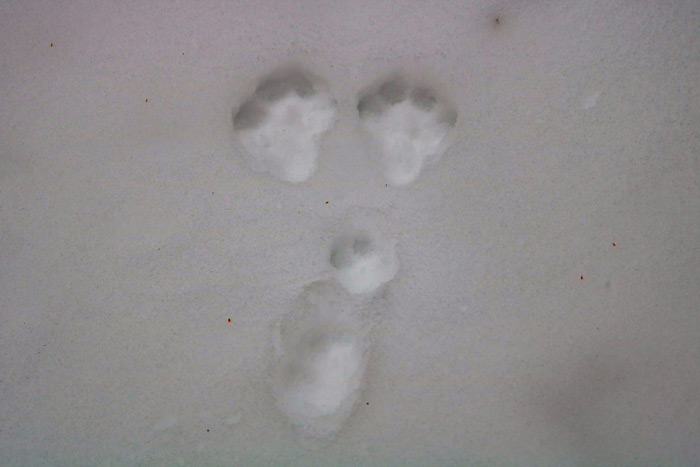
Snowshoe hare tracks during the winter.
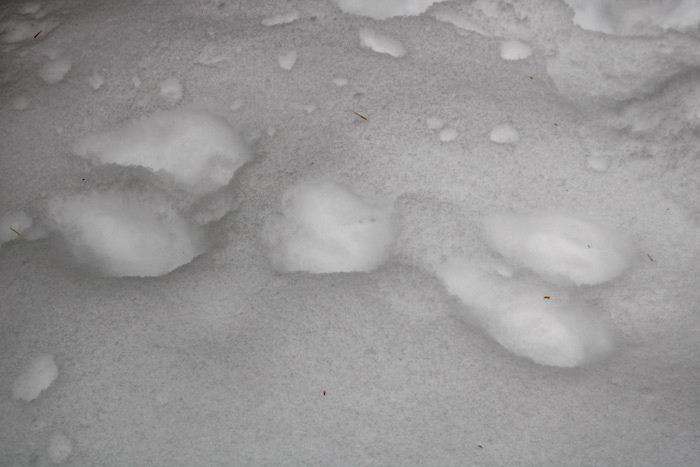
Distorted snowshoe hare tracks in the snow.
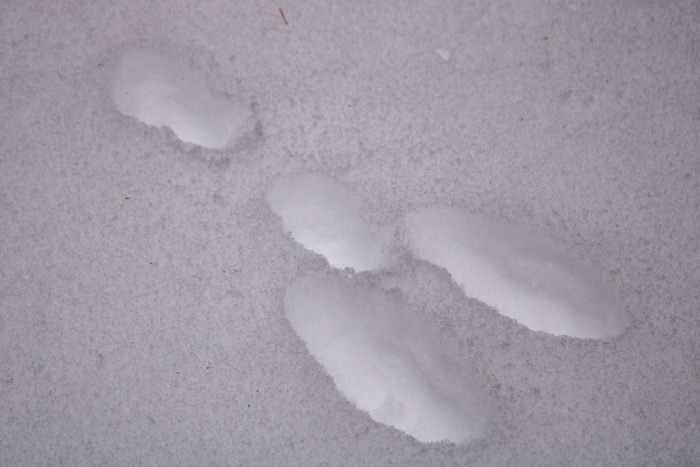
Snowshoe hare tracks in the snow.
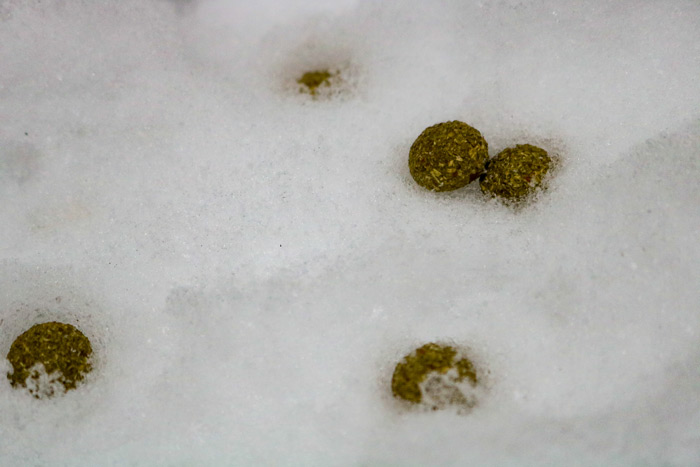
Snowshoe hare scat on the snow.
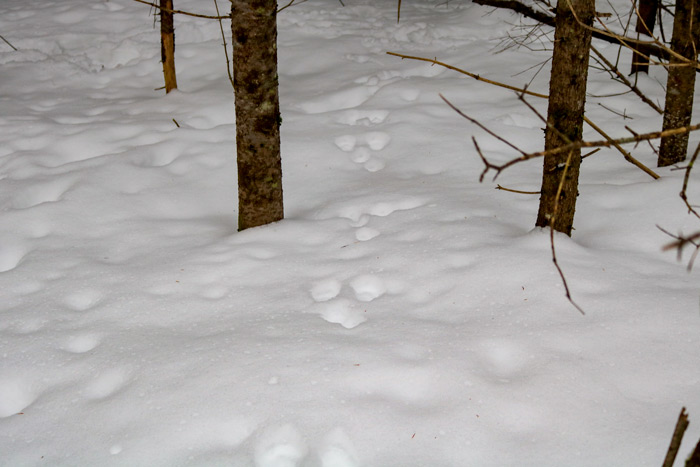
Following snowshoe hare tracks.
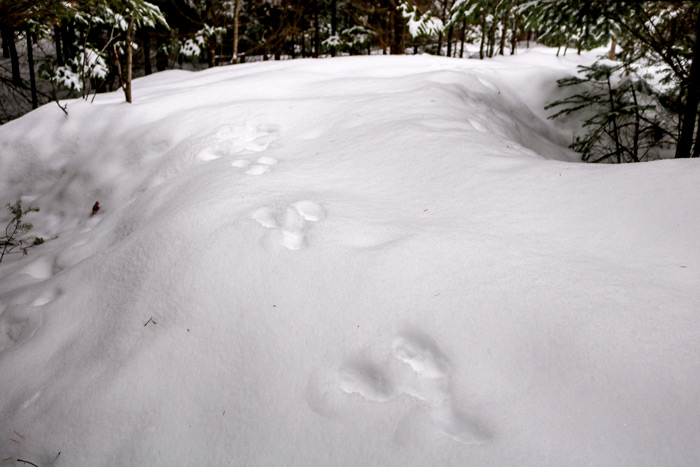
Snowshoe hare tracks on a snow-filled hill.
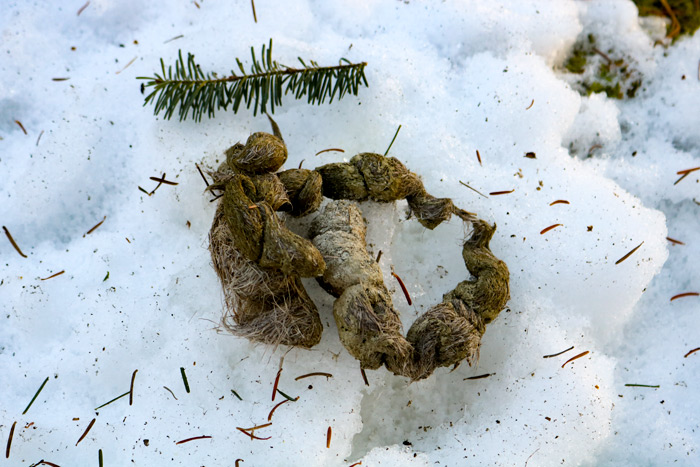
Here I found what I think could have been fox (Canidae) scat. There were no tracks around the area in the snow, so there was no sure way to tell. Whatever it was, you can see that it had consumed an animal, because of the fur that it contained.
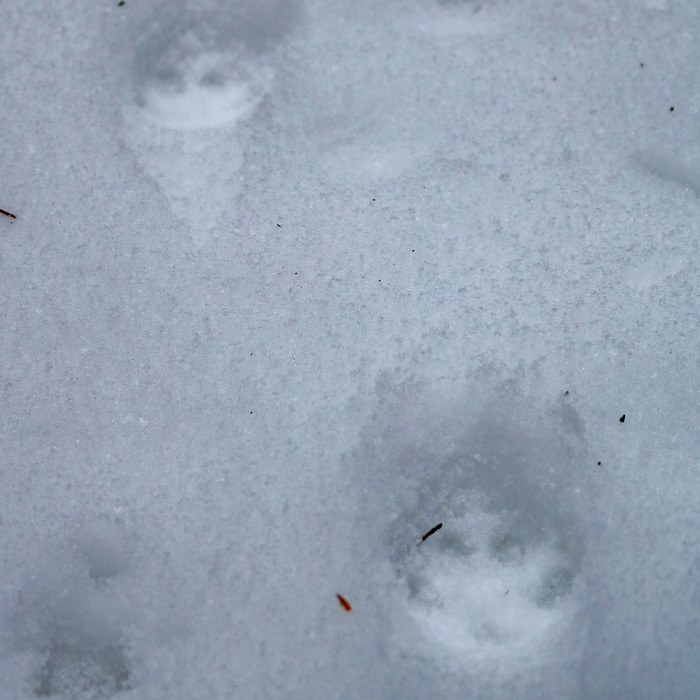
Later in the day, I found what I thought could be the tracks of the fox. The gait was too long to be that of a cat and the size of the tracks were too small to be that of a coyote. It was difficult to tell, because of how distorted the tracks were. Does anyone have any suggestions?
There haven’t been wild turkeys Meleagris gallopavo on the property since the fall. I found what seemed to be the tracks of just one of these birds. We had experienced freezing rain the night before and these tracks were quite distorted.
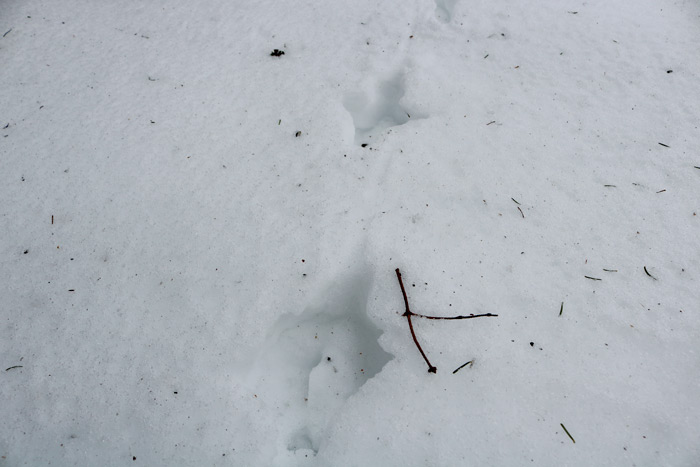
Wild turkey tracks in the snow.

Wild turkey scat in the snow.
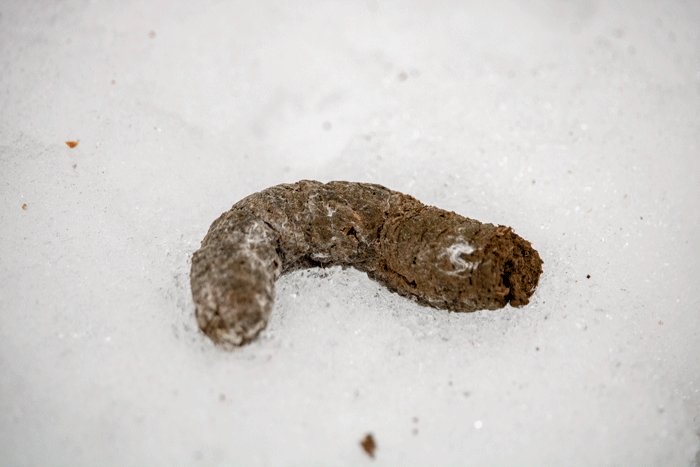
Wild turkey scat in the snow.
Now for my most exciting find. For the past month or so, we have been experiencing a skunk-like smell around the property and every so often, in the house. We thought this was quite peculiar for this time of year. I decided to investigate near the edge of the stream and I couldn’t believe what I saw. I found mink Mustela vison tracks coming out of the stream and leading into the woods. These animals have anal scent glands that make a strong smelling musky liquid that is discharged when the animal is disturbed or excited. I think this could be the source of this mysterious odor and we may indeed have our first resident mink on the property.
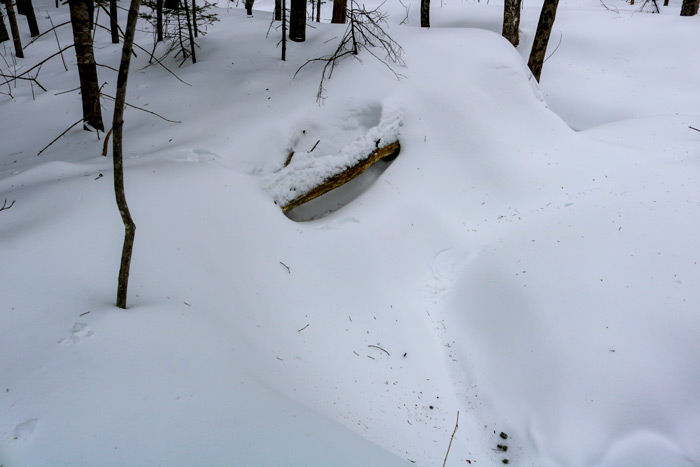
The edge of the stream.

Here you can see where the mink was climbing out of the stream.

Fresh mink tracks in the snow.
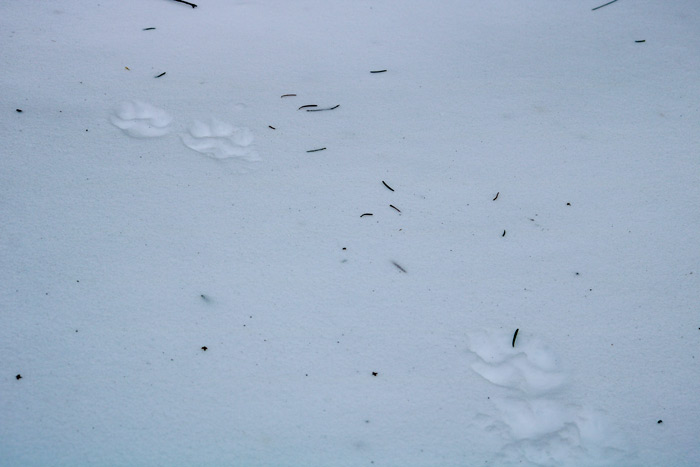
Mink tracks in the snow.
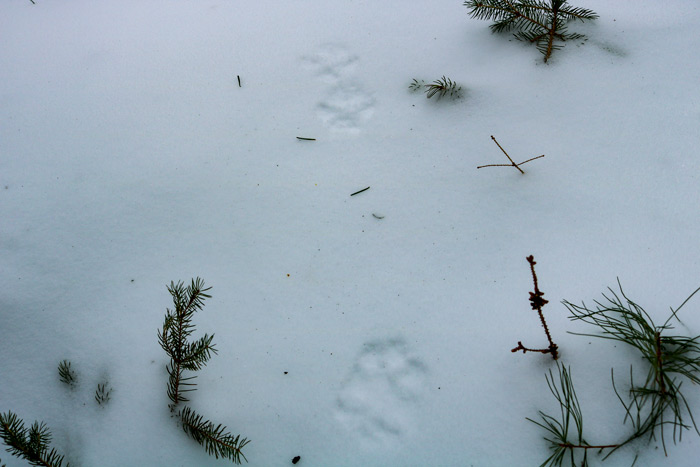
Mink tracks along a few young pine trees (Pinus).
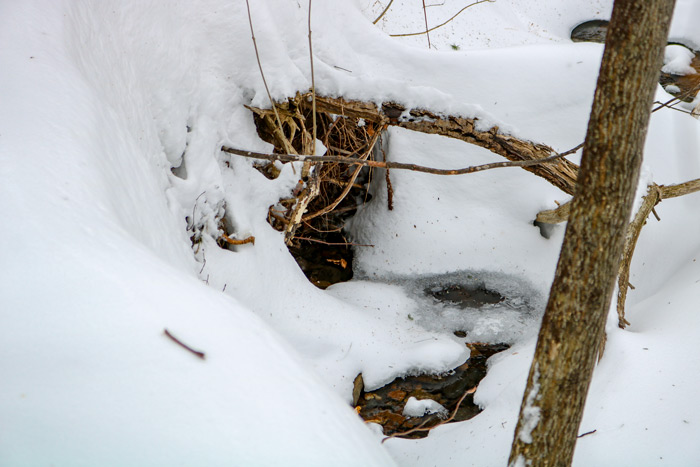
I was hoping this could be where the mink has made one of its dens. Mink will make dens in a variety of areas including along stream banks. These animals will use a den for a few days and then move on. They also leave a pile of feces outside their den. I will have to look further for more signs to find out where the mink has taken up residence along the stream.
I also hope to catch a glimpse of all these animals while out in the woods and have the opportunity to photograph one of these fascinating creatures. I am also holding onto the hope of spotting a moose and not just its tracks!
Leave a Reply